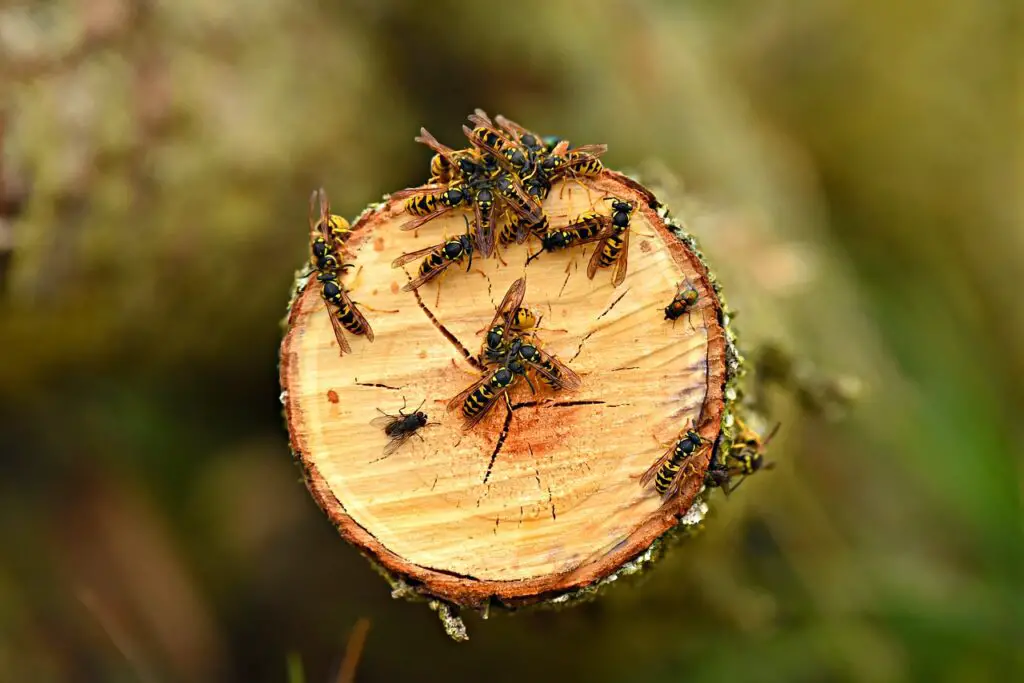
Wasps are a common sight during the warmer months of the year. They are known for their painful stings and aggressive behavior, which can make them a nuisance for people enjoying outdoor activities. However, as the temperature drops, wasps become less active and eventually stop flying altogether. But what temperature do wasps stop flying?
According to experts, wasps are cold-blooded insects, which means that their body temperature is regulated by the surrounding environment. As the temperature drops, their metabolism slows down, and they become less active. Wasps are most active when the temperature is between 70 and 90 degrees Fahrenheit, but they can still fly when it’s cooler. However, once the temperature drops below 50 degrees Fahrenheit, wasps become sluggish and eventually stop flying altogether.
Understanding the temperature range in which wasps are active can be useful for people who want to avoid them or get rid of a wasp infestation. By knowing when wasps are most active, people can plan outdoor activities accordingly or take steps to prevent wasps from building nests near their homes. It’s important to note that wasps can still sting even when they are not flying, so it’s best to avoid them altogether if possible.
Table of Contents
Understanding Wasp Behavior
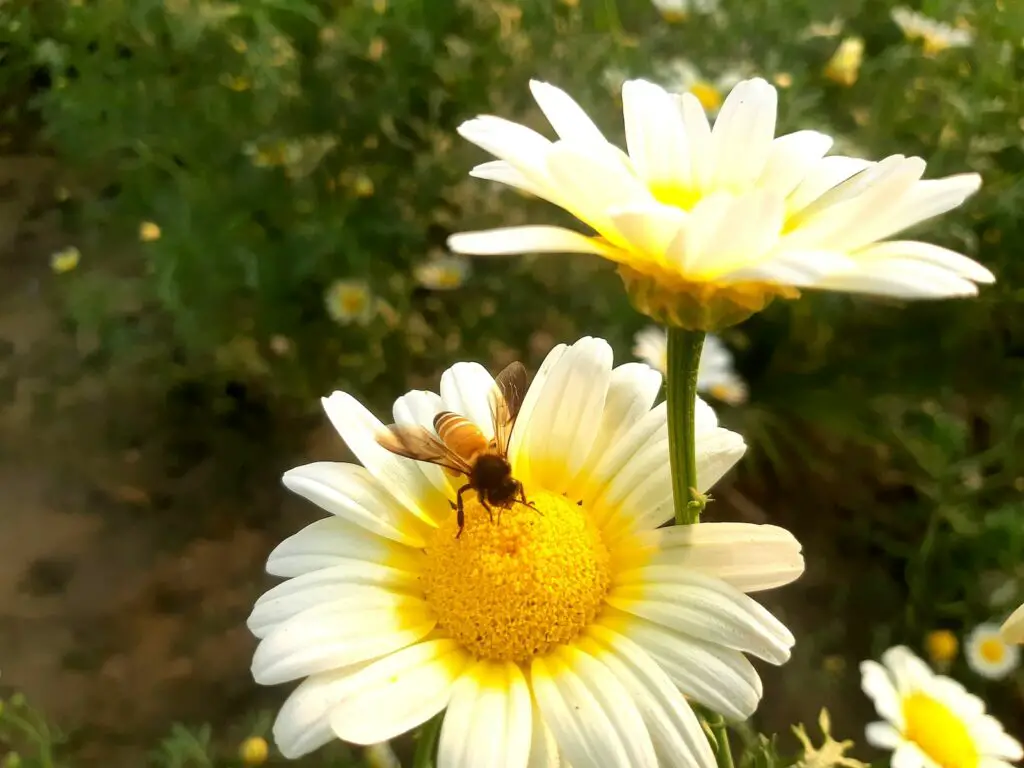
Wasps are social insects that live in colonies. Each colony has a queen, workers, and males. The queen wasp is responsible for laying eggs, while the workers take care of the nest and larvae. Males are responsible for mating with the queen and do not contribute to the nest’s maintenance.
Wasp colonies can be found in various locations, such as underground, in trees, and on buildings. The nests are made of paper and can vary in size depending on the species. Paper wasps, for example, build open nests that resemble an upside-down umbrella, while hornets build large, enclosed nests.
Wasp activity is highest during the summer months when the colony is growing. As the temperature drops in the fall, the colony’s activity decreases, and the wasps become less aggressive. They will begin to focus on preparing the nest for winter and protecting the queen.
Old queens will die off in the fall, and new queens will emerge and mate with males before finding a place to hibernate for the winter. The rest of the colony will die off as the temperature continues to drop.
As the temperature drops even further, the queen wasps will become dormant and hibernate until the spring when they will emerge and start new colonies. The size of the new colony will depend on the number of queen wasps that survived the winter.
In general, wasps stop flying when the temperature drops below 50 degrees Fahrenheit. However, this can vary depending on the species and the location of the nest. It is important to be cautious around wasp nests during the summer months when the colony is active and to avoid disturbing them during the fall when the wasps become more aggressive in protecting the queen and nest.
Impact of Temperature on Wasps
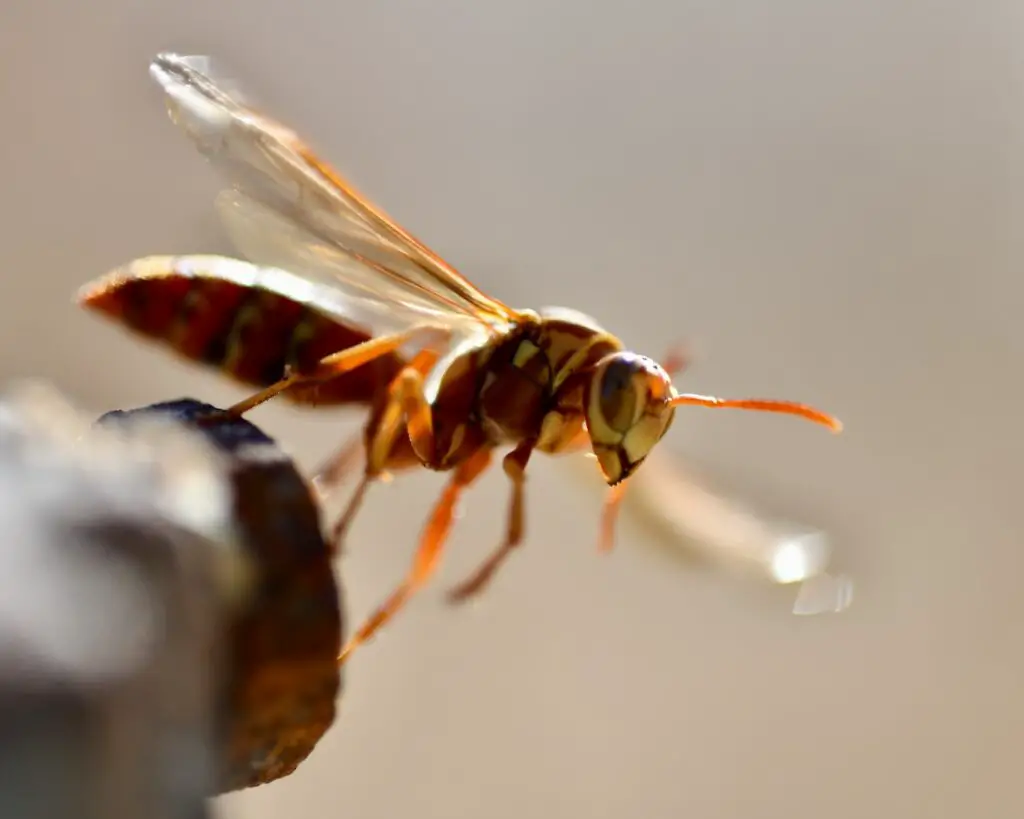
Wasps are known to be active during the warm months of the year, but their activity is greatly influenced by temperature. As ectothermic organisms, wasps rely on external sources of heat to regulate their body temperature, which in turn affects their metabolic rate and activity levels.
During the spring and summer months, when temperatures are warm, wasps are highly active and can be seen buzzing around flowers and other sources of food. However, as temperatures begin to drop in the fall and winter months, wasps become less active and may even become lethargic and inactive.
In cold weather, wasps may become sluggish and less responsive to stimuli. They may also become more aggressive, as they try to protect their nests and food sources from potential predators.
Freezing temperatures can be deadly for wasps, as their bodies are not equipped to handle extreme cold. In such cases, wasps may become immobilized and die.
Climate and weather patterns also play a role in the activity levels of wasps. Rainy weather may force wasps to take shelter and reduce their activity levels, while warm weather may increase their activity levels and make them more active.
During the night, wasps may become less active and seek shelter in their nests. This is because they rely on external sources of heat to regulate their body temperature, and the absence of sunlight can cause their body temperature to drop.
In summary, temperature plays a crucial role in the activity levels of wasps. As ectothermic organisms, wasps rely on external sources of heat to regulate their body temperature, which in turn affects their metabolic rate and activity levels. Cold weather, freezing temperatures, and rainy weather can all impact the activity levels of wasps, while warm weather can increase their activity levels.
Wasps and Seasonal Changes
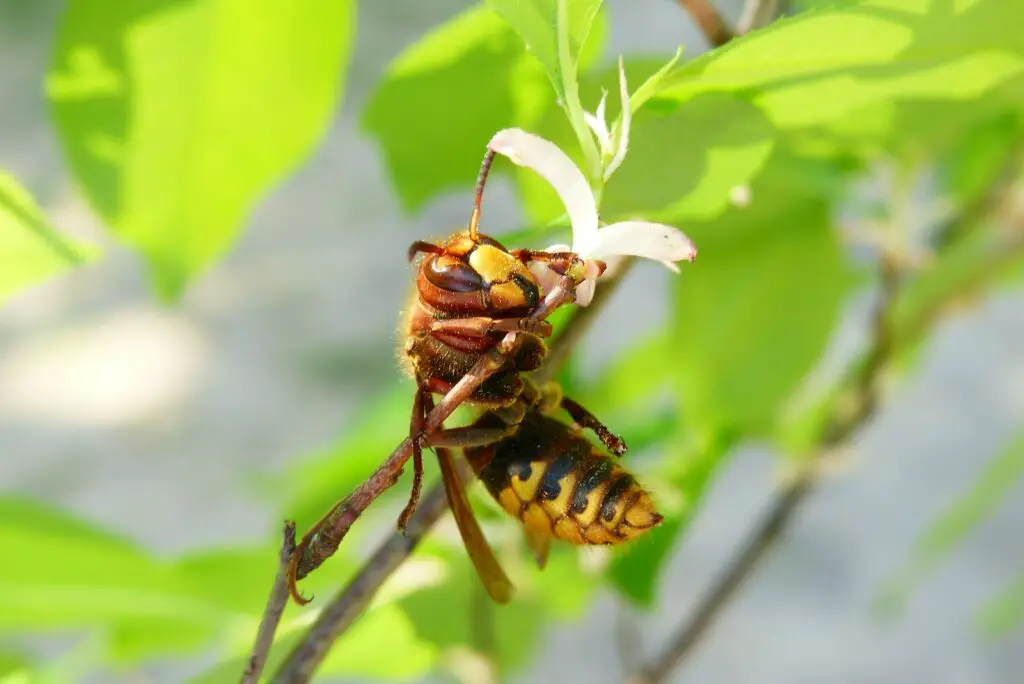
Wasps are cold-blooded insects and therefore, their activity is influenced by seasonal changes. During the summer, wasps are active and can be seen flying around in search of food. They are most active during the day when temperatures are warm and can fly at temperatures ranging from 50°F to 90°F.
As the temperature starts to drop in the fall, wasps begin to slow down. They start to prepare for winter by hibernating in protected areas such as attics, wall voids, and hollow trees. During hibernation, wasps become inactive and their metabolism slows down. They do not fly during this time and remain in a state of dormancy until the weather warms up again in the spring.
During the winter, wasps enter a state of winter slumber. This is a deep sleep that allows them to conserve energy and survive the cold temperatures. During winter slumber, wasps do not fly and remain in their hibernation sites until the weather warms up.
In summary, wasps are active during the summer when temperatures are warm and can fly at temperatures ranging from 50°F to 90°F. As the temperature drops in the fall, wasps prepare for winter by hibernating in protected areas. During hibernation and winter slumber, wasps do not fly and remain in a state of dormancy until the weather warms up again.
Wasp Survival Strategies
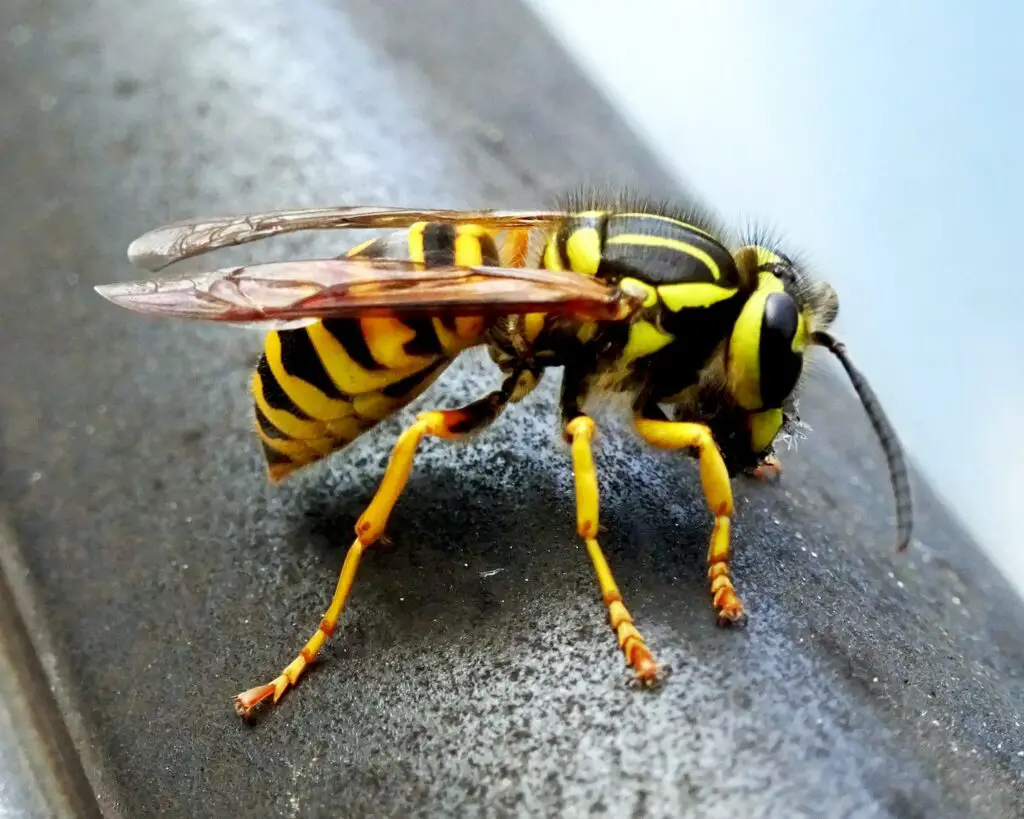
Wasps are known for their aggressive behavior and painful stings. However, they are also remarkable creatures with unique survival strategies. These strategies help them to survive in different environments and conditions. Here are some of the survival strategies that wasps use:
Food and Energy
Wasps are predators, and they feed on other insects, spiders, and even other wasps. They hunt their prey using their powerful jaws and stingers. Wasps also feed on nectar and honeydew, which provide them with the necessary sugars and carbohydrates to survive.
Shelter and Feeding
Wasps build their nests in sheltered areas such as trees, bushes, and under eaves. The nests are made of paper-like material, which the wasps make by chewing wood and mixing it with saliva. The nests provide shelter for the wasps and their young.
Starvation
Wasps can starve to death if they do not find enough food. During the winter months, when food sources are scarce, wasps die off. However, some species of wasps hibernate during the winter and emerge in the spring when food sources become available again.
Protein
Protein is essential for the growth and development of wasp larvae. Adult wasps hunt for other insects to feed their young. They paralyze their prey with their stingers and then lay their eggs on the body of the prey. When the eggs hatch, the larvae feed on the paralyzed prey.
Honey
Wasps are also attracted to honey. They will often raid beehives to steal honey, which provides them with a source of energy. However, bees will defend their hives from wasp attacks, and the wasps may end up getting stung.
In conclusion, wasps have unique survival strategies that help them to survive in different environments and conditions. They are predators that feed on other insects and nectar. They build their nests in sheltered areas and hibernate during the winter months. Wasps also need protein for the growth and development of their young, and they are attracted to honey as a source of energy.
Wasps and Predation
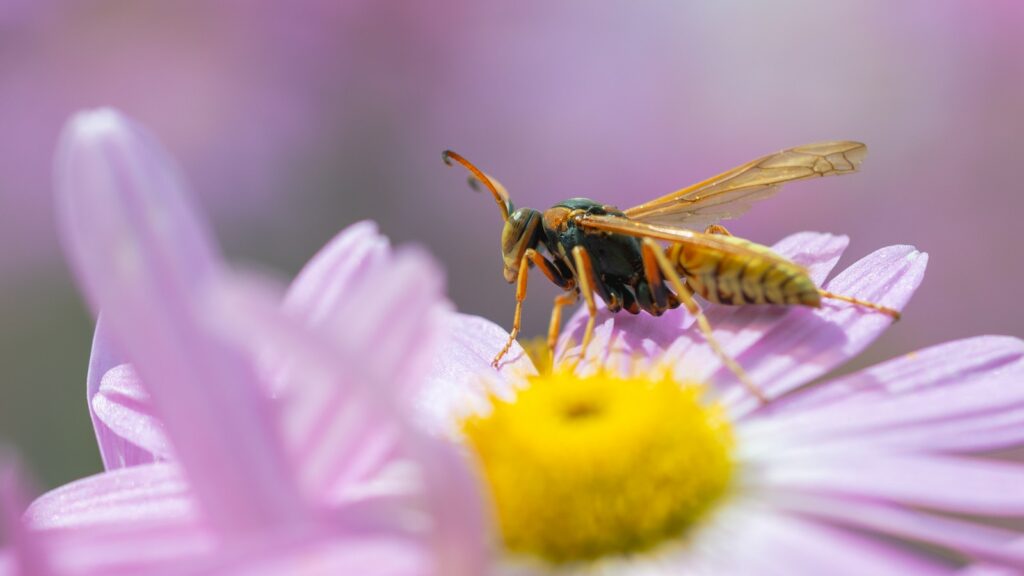
Wasps are known for their aggressive nature and their ability to sting. However, they also play an important role in the ecosystem as predators. They are known to prey on a variety of insects, including spiders, moths, and butterflies.
Some species of wasps, such as yellow jackets and European hornets, are particularly aggressive and can be a nuisance to humans. They are known to attack unprovoked and can sting multiple times. However, it’s important to note that these species only attack when they feel threatened or their nest is disturbed.
Solitary wasps, on the other hand, are less aggressive and typically only sting when they are defending themselves or their prey. These wasps are important predators, as they help to control the population of other insects.
Interestingly, infertile female wasps, also known as worker wasps, are responsible for most of the hunting and foraging. Fertile females, or queens, are responsible for laying eggs and building nests.
Some wasps, such as European hornets, are nocturnal and hunt at night. They are attracted to light and can often be found near outdoor lights or porch lights.
In addition to being predators, wasps are also prey for other animals. Birds, spiders, and ants are known to feed on wasps. Some species of wasps have markings that help them avoid predators, such as yellowjackets with their distinctive black and yellow stripes.
Overall, wasps play an important role in the ecosystem as predators. While some species can be aggressive and a nuisance to humans, they are an important part of the food chain and help to control the population of other insects.
Activity Level and Flying Patterns of Wasps
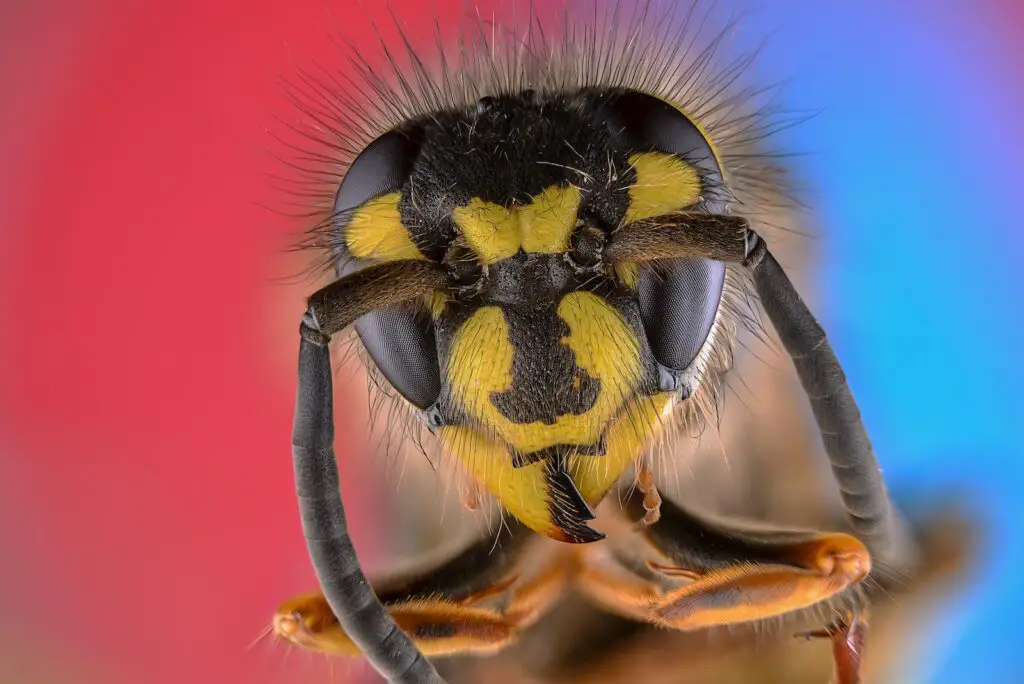
Wasps are known for their aggressive behavior and their ability to sting. They are also known for their flying patterns and activity level, which can vary depending on various factors such as temperature, time of day, and season.
During the warmer months, wasps are generally more active and tend to fly more frequently. They are often seen flying around flowers, trees, and other sources of food. They are also known to fly in a zigzag pattern, which can make them difficult to catch or swat.
However, as the temperature drops, wasps become less active and tend to fly less frequently. This is because wasps are cold-blooded insects, which means that their body temperature is regulated by the environment around them. When the temperature drops, their metabolism slows down, and they become less active.
As the temperature continues to drop, wasps may become sluggish and eventually stop flying altogether. This is because their muscles become less efficient at lower temperatures, making it difficult for them to fly and move around.
It is important to note that wasps are still capable of stinging even when they are not flying. In fact, they may become more aggressive and defensive when they are on the ground or in a confined space, such as inside a house or car.
In summary, the activity level and flying patterns of wasps can vary depending on various factors, with temperature being a significant factor. As the temperature drops, wasps become less active and may eventually stop flying altogether. However, it is important to remember that they are still capable of stinging even when they are not flying and should be avoided or destroyed if they pose a threat to humans or honeybees.
Conclusion
In summary, wasps are cold-blooded insects that become less active as temperatures drop. They are most active during the summer months when temperatures are warmest. Wasps are capable of flying at temperatures as low as 50°F (10°C), but their activity level decreases significantly below this temperature.
It is important to note that different species of wasps have slightly different temperature preferences, so the exact temperature at which they stop flying may vary. However, as a general rule, wasps become less active and eventually stop flying altogether when temperatures drop below 50°F (10°C).
It is also worth mentioning that the behavior of wasps can be affected by other factors besides temperature, such as the availability of food and the length of daylight hours. Additionally, some wasps are more active during the morning or evening hours, while others are active throughout the day.
Overall, understanding the temperature preferences and behavior of wasps can be helpful for those who want to avoid encounters with these stinging insects. By knowing when wasps are most active and when they are likely to be less active, people can take steps to avoid them and reduce the risk of getting stung.